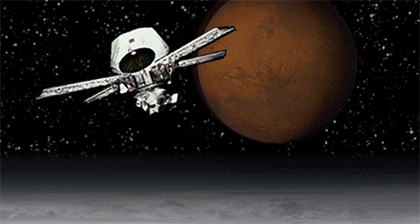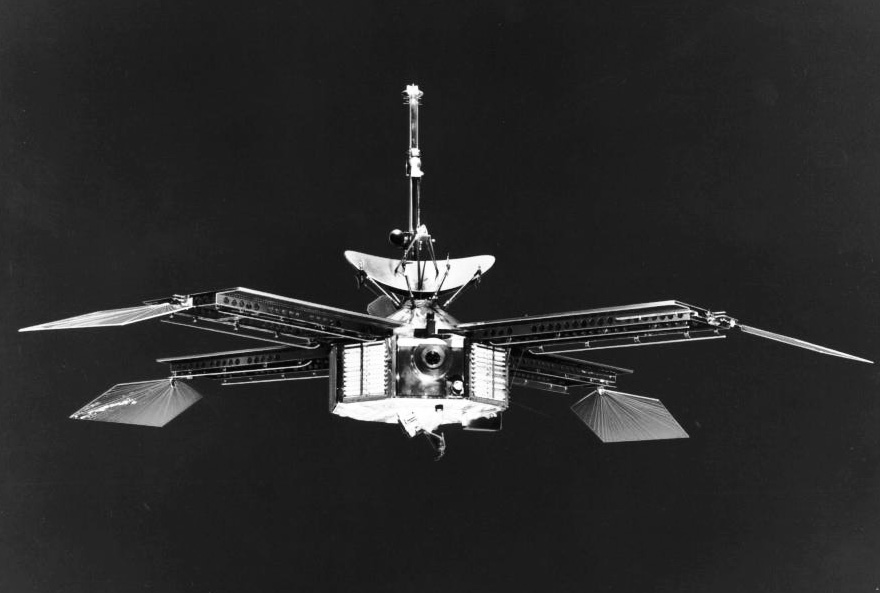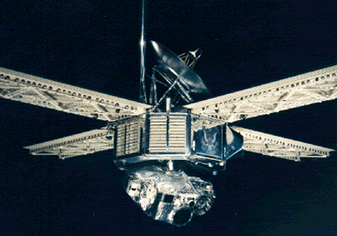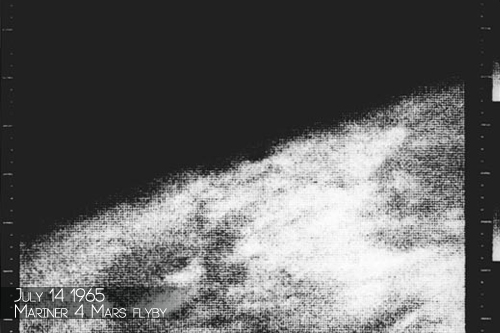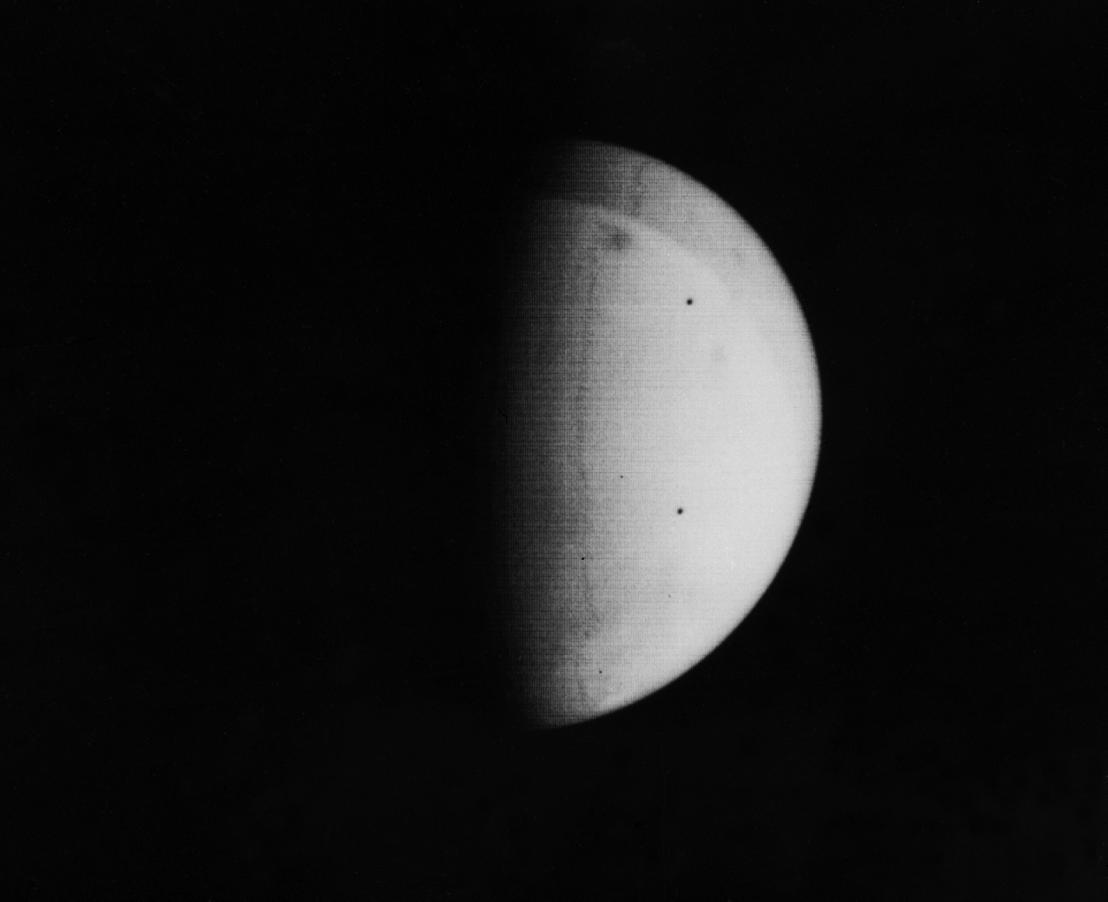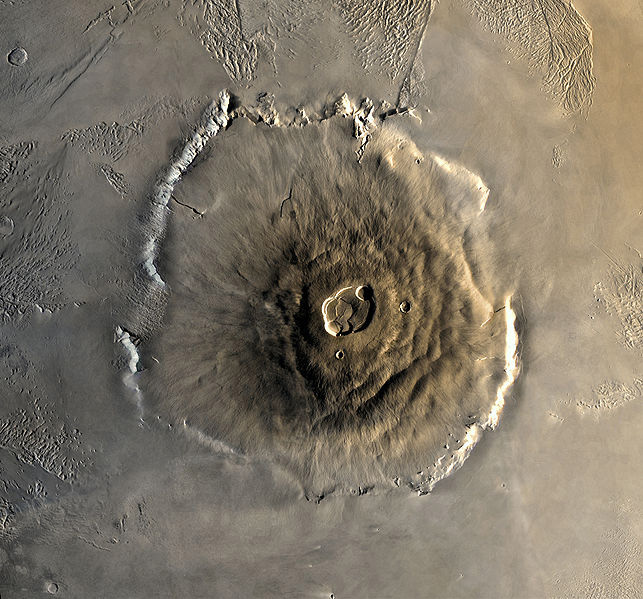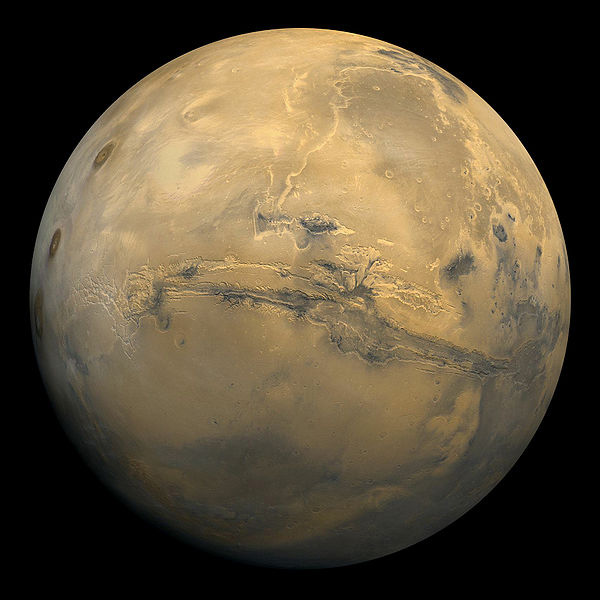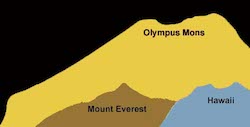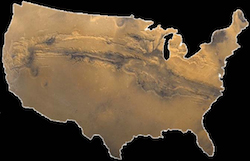The Mars Mariner missions represented U.S. scientists' best efforts to date to determine whether Mars could support life. Mariners 4, 6 and 7 were “fly-by” encounters – each spacecraft photographed a narrow swath of the planet’s surface as it sailed past, transmitting back to Earth the first "close-ups" of the red planet before continuing in an elongated orbit taking it eventually around the sun.
The primitive and piecemeal images returned from these missions did not provide definitive answers to questions about the possibility of life on the red planet. In fact, after studying data returned from Mariners 6 and 7, disappointed scientists began describing Mars as a dead and barren moon-like orb. By the time Mariner 9 – the first Mars orbiter – was launched in 1971, scientists were resigned to the fact that Mars could not support life in any form. Mariner entered Mars orbit on November 14, 1971, but a massive dust storm – the largest and longest on record – shrouded the entire planet from view, and scientists had to wait – and wait – until the Martian skies cleared and the cameras onboard the orbiting spacecraft could be re-activated.
When the two Mariner cameras finally began gathering image data in early January 1972, the information they recorded turned our knowledge about Mars upside down! Not only did they find an enormous volcano, Olympus Mons, 14 miles tall (nearly 3 times the height of Mt. Everest) and 300 miles wide, but also a deep canyon 3000 miles long (as long as the United States is wide) – later named Valles Marineris after the spacecraft that first observed it.
Mariner 9 cameras also revealed ancient river beds, craters, layered polar deposits, evidence of wind-driven deposition and erosion of sediments, weather fronts, ice clouds, localized dust storms, morning fogs and more. With evidence of flow features, and therefore the possibilty of a time when water existed in liquid form on the surface of Mars, questions about the possibility of life there were renewed and intensified, resulting in support for continuing exploration of Mars and the other planets.
The Viking Landers (1976), Mars Rovers Spirit and Opportunity (2004), the Phoenix lander (2008), and, most recently, Curiosity (2012) have brought us tantalizingly close to identifying evidence of life on the red planet – and each of these missions owes a large portion of its success to the astounding findings of Mariner 9. When its onboard power supply was depleted in October 1972, Mariner 9 was turned off, but it still circles Mars in a gradually decaying orbit, and is expected to crash on the planet's surface sometime after 2020. |
|||||||||||||||
